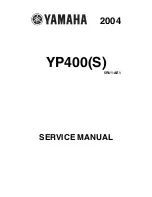
22
EN
GLISH
Elite
2
Mini XS Plus Rev.B
A
B
Fig. 5.7
5.8 Pushing the scooter
The scooter can be moved by pushing. In order to do so, the
motors must be disengaged using a freewheel lever. This
feature was developed for the attendants of scooter users and
also functions as an emergency freewheel lever.
The freewheel lever has 2 positions:
DRIVE (A - Fig. 5.7)
All movement, including braking, is exclusively controlled by
operation of the electronic control system.
FREEWHEEL (B - Fig. 5.7)
Movement is by manual means. Movement can also occur due
to gravity, (potholes, kerbs, hills or inclines etc). Push the lever
up for drive and down for freewheel.
DANGER!
• The free wheel lever should only be operated by the
attendant and never by the user.
• A user may never be left unattended while the scooter is in
‘push’ (B - Fig. 5.7).
• Never set the lever to the ‘push’ position on a slope! When
the freewheel lever is set to ‘push’, the automatic parking
brake is deactivated. This makes it possible for the scooter to
roll down the slope.
• The automatic parking brake only works is the lever is set to
‘drive’ position.
• When the scooter is no longer being pushed, the freewheel
lever should be set to ‘drive’ immediately.
• To manually push the scooter you must release the motor
brake.
• Do not engage or disengage the motor brake unless power
to the scooter is off.
• Make sure you have full control over the scooter when you
release the motor brake. When you do so the scooter will
have no braking capability.
• Make sure the scooter is on level ground before you release
the motor brake.
• Propel this scooter by the steering wheel and seat back only.
They provide secure points for you to hold the rear of the
scooter to prevent a fall or tip-over.
• Check to make sure push handle grips will not rotate or slip
off.
5.9 Using Near Water
Take extra care when using your scooter near open water.
Canal tow paths, beaches, quay sides and river banks can be
hazardous.
DANGER!
• Do not travel along a sloping surface leading to an open
waters edge.
• Keep a distance of at least one scooter length from an open
waters edge whenever possible.
• Beware of hidden obstacles such as tree roots drain covers
and mooring rings as these may cause loss of control if you
hit them unexpectedly.
• Use a low speed setting.
• Never reverse towards open water.
• Do not drive up or down steep slopes located near an open
waters edge.
• Give way to pedestrians on canal tow paths and footpaths.
• Sound the horn to let other people know you are there.
• Never try to manoeuvre around pedestrians if it takes you
too close to the waters edge.
• Avoid deep sand, gravel, mud and wet grassy slopes.
• Take extra care on windy days as loose clothing such as
capes or blankets can suddenly fly up and may foul the
controls or temporarily block you view.
• Do not get close to open water during a storm.
• When stationary, switch the scooter OFF at the key.
• Observe all local by laws, rules and regulations.
CAUTION!
• Always clean your scooter thoroughly if it has been exposed
to mud, sand, salt or other contaminates.
• Do not use a high pressure washer, (see section 9.6).
















































